A Glimpse into the Norse Culture: 13 Viking Symbols Explained
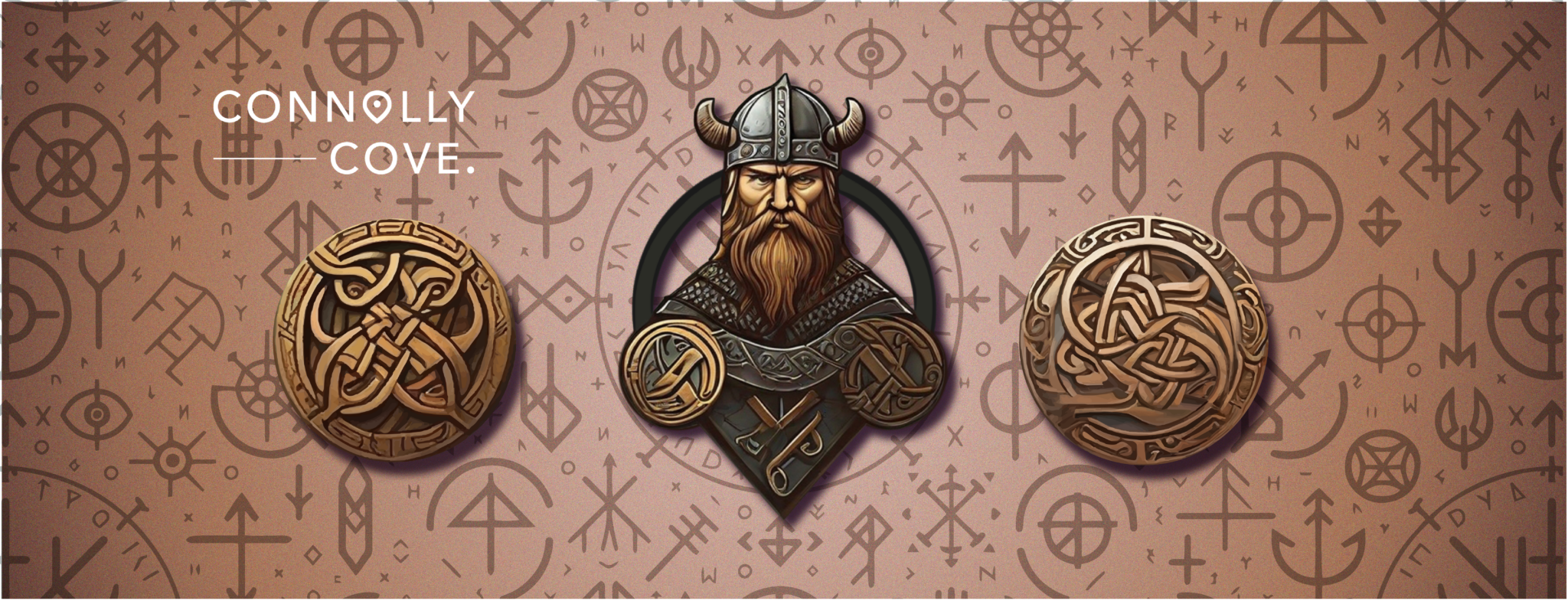
Updated On: April 29, 2024 by Raghda Elsabbagh
Viking symbols have always been wrapped in an enigmatic aura of mystery, haven’t they? The fascination lies in how each individual symbol held paramount significance and was intricately woven into the very essence of Viking culture.
After hours immersed in historical documents and Scandinavian folklore, we feel we can unravel some secrets that were once closely guarded Norse mysteries. This piece aims to illuminate popular Viking symbols, from Thor’s Hammer to Valknut, uncovering their symbolism and resonance within the labyrinthine corridors of ancient Norse mythology.
Intrigued? Well, let’s lift the veil on this fascinating subject without further ado!
Table of Contents
What is the Norse Culture?
Norse culture refers to the cultural practices, beliefs, and way of life of the people who lived in the regions of Scandinavia during the Viking Age (approximately 793 to 1066 AD). The Norse, or Vikings, were seafaring people known for their exploration, trade, and raiding activities.
The Norse culture had a lasting impact on the history and development of the Scandinavian countries, and its influence is still evident in various aspects of modern Scandinavian culture and heritage. Here are some key aspects of Norse culture:
Society and Social Structure
Norse society was organised into classes, including kings, chieftains, freemen (farmers and artisans), and enslaved people. The social structure was hierarchical, with kings or jarls at the top, followed by various levels of chieftains and landowners.
Religion and Mythology
The Norse people practised a polytheistic religion with a group of gods and goddesses, including Odin, Freyja, Thor and Loki. The mythology included stories of creation, the end of the world (Ragnarök), and various gods’ adventures and legendary heroes’ adventures.
Language and Runes
Old Norse was the language spoken by the Norse people. It is a North Germanic language and a precursor to the modern Scandinavian languages. Viking runes, a system of writing using characters with magical and divinatory significance, were used by the Norse for inscriptions and communication.
Each rune had its meaning and represented a different sound in the Viking language. The runes were used for writing and held a sacred significance in Viking culture. They were believed to possess magical powers and could be used for divination or casting spells.
Today, you can still see examples of Viking runes on artefacts, wood, runestones, and other surfaces that have survived through the centuries. Exploring these ancient symbols can give us a glimpse into the rich history and traditions of the Vikings.
Viking Age and Exploration
The Viking Age was a period of intense seafaring and exploration, with Norse people venturing as far as North America, the Mediterranean, and the Middle East. Vikings were skilled shipbuilders and navigators, using their longships for trade, exploration, and raids.
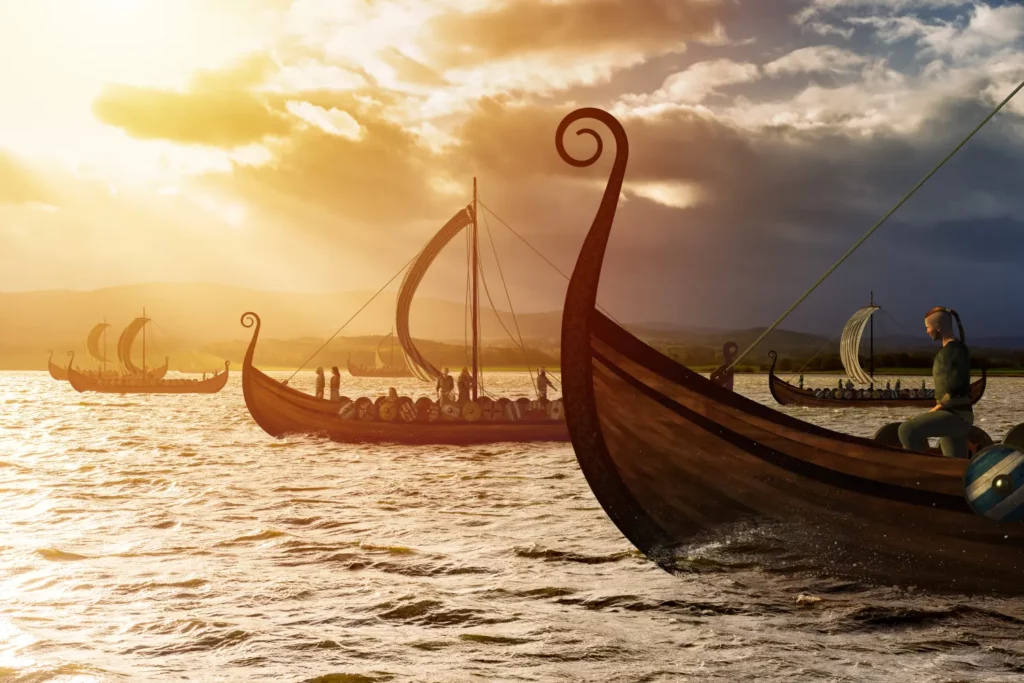
Trade and Economy
Norse society relied on agriculture, with farmers cultivating crops and raising livestock. Trade was a crucial aspect of Norse culture, with Vikings engaging in commerce with neighbouring regions and distant lands.
Art and Craftsmanship
Norse artisans were skilled in metalwork, woodworking, and other crafts. Artefacts such as jewellery, weapons, and tools often featured intricate designs and symbols, reflecting the Norse aesthetic.
Legal System
Norse society had a complex legal system that varied across different regions. The Thing, a governing assembly, played a significant role in dispute resolution and lawmaking.
Burial Practices
Norse people had distinctive burial practices, with the deceased often interred in burial mounds or ship burials. Grave goods, including weapons and personal items, were usually included in burials.
Most Popular Viking Symbols and Their Meanings
Viking symbols are Norse and Scandinavian signs from Viking history with symbolic meanings tied to their gods, rituals, and traditions. They were an integral part of Norse culture and mythology. They were not just art but told tales of gods, life and death, power and war. Each symbol had a story about the fearsome Viking warriors’ way of life or their rich mythological world.
These symbols were often etched on artefacts, weapons, ships, jewellery runestones, and other items to convey meaning, protect, or represent the mythology and beliefs of the Vikings. Their tools bore symbols as marks of pride, too! They loved showing off symbols like the Valknut or the Horn of Odin, which spoke volumes about their might!
Here are some of the commonly known Viking symbols:
1. Thor’s Hammer (Mjölnir)
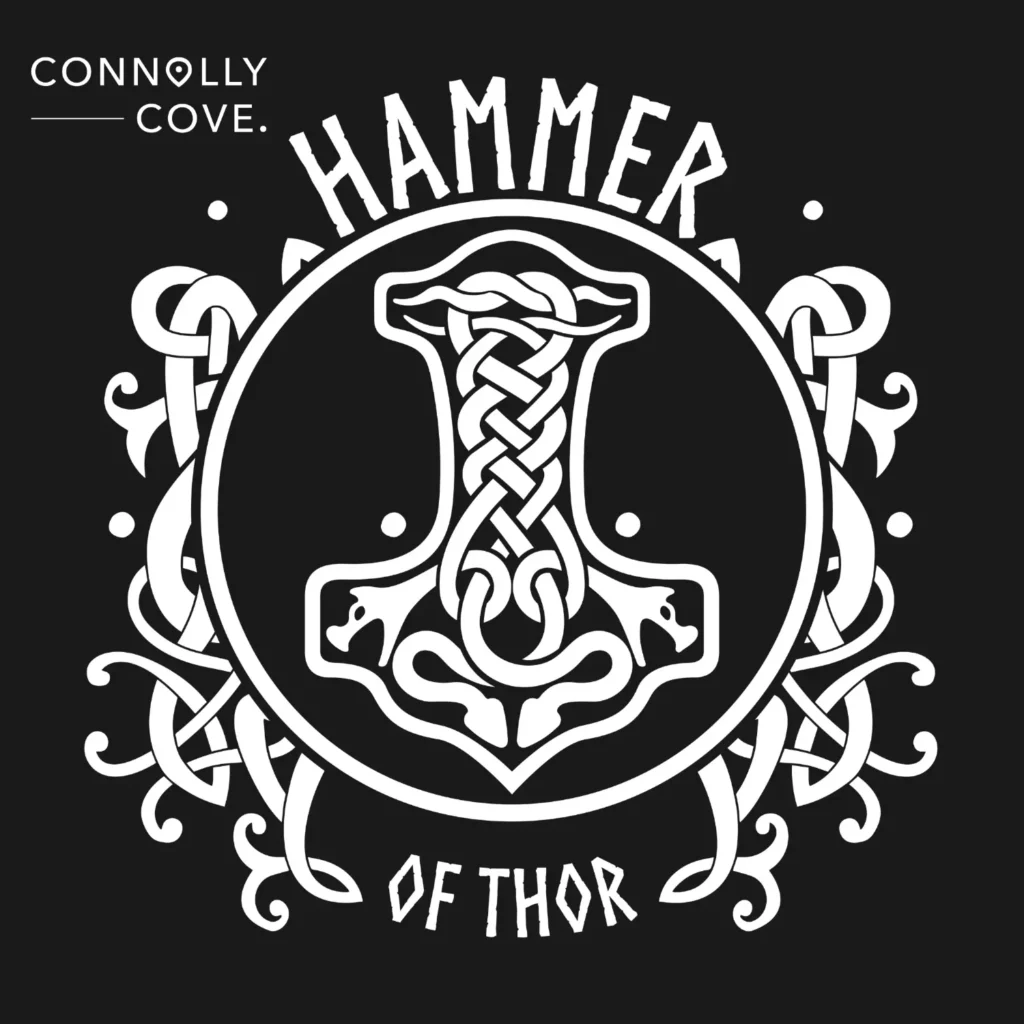
Thor’s Hammer, also known as Mjölnir, is one of the most famous Viking symbols. It represents the power of thunder and lightning, associated with Thor, the god of thunder in Norse mythology. The Hammer was believed to bring protection and good fortune to its wearer or owner. In Viking culture, warriors would wear amulets shaped like Mjölnir for strength and courage in battle. The symbol is often seen as a sign of strength and fearlessness.
2. Valknut

The Valknut is a powerful Viking symbol that represents Odin, the chief of the Norse gods and god of war and death. It comprises three interlocking triangles, and its name roughly translates to “knot of the slain” or “Hrungnir’s heart” in Old Norse.
The Valknut symbolises courage, honour, sacrifice, and the warrior spirit. It was often associated with fallen warriors or those who died heroically in battle, as well as with Odin’s power over life and death. This symbol can be found on various Viking artefacts like weapons, shields, and burial stones.
3. Yggdrasil
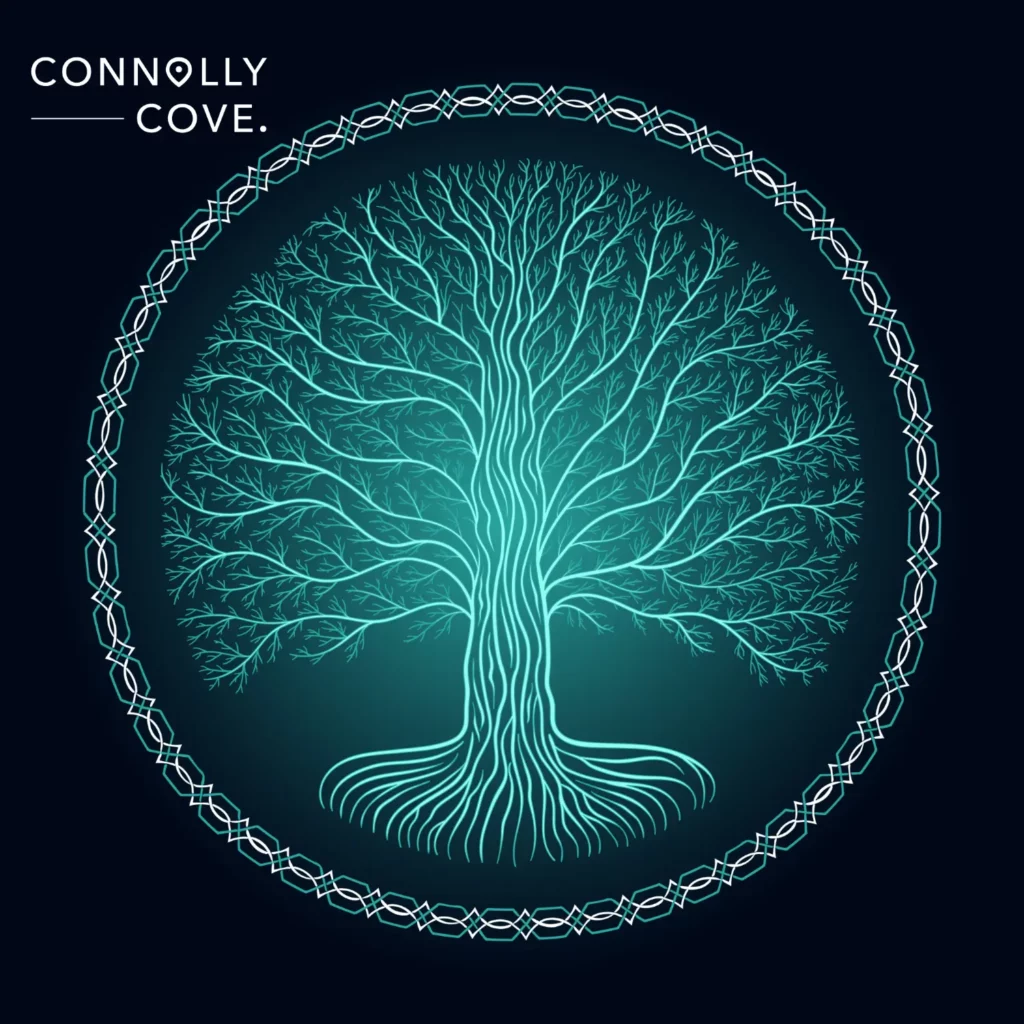
Yggdrasil, also known as the World Tree, is one of the most important Viking symbols in Norse mythology. It is a massive ash tree that connects the nine worlds of the Viking universe. Yggdrasil represents the interconnectedness of all things in the universe—from realms to gods to humans. It symbolises life, growth, and renewal.
According to Norse myths, it is believed that Odin hanged himself from Yggdrasil for nine days and nights to gain wisdom. The branches of this great tree reach into different realms, including Asgard (the realm of gods), Midgard (the world of humans), and Niflheim (the kingdom of ice).
Yggdrasil is an intriguing symbol with deep connections to nature and spirituality. Visually, Yggdrasil is a large tree with intricate roots spreading in different directions. Its branches may also bear various creatures, such as birds or animals. This symbolic representation reflects the belief in ancient Scandinavian culture that everything in nature is connected through this sacred tree.
4. Vegvisir
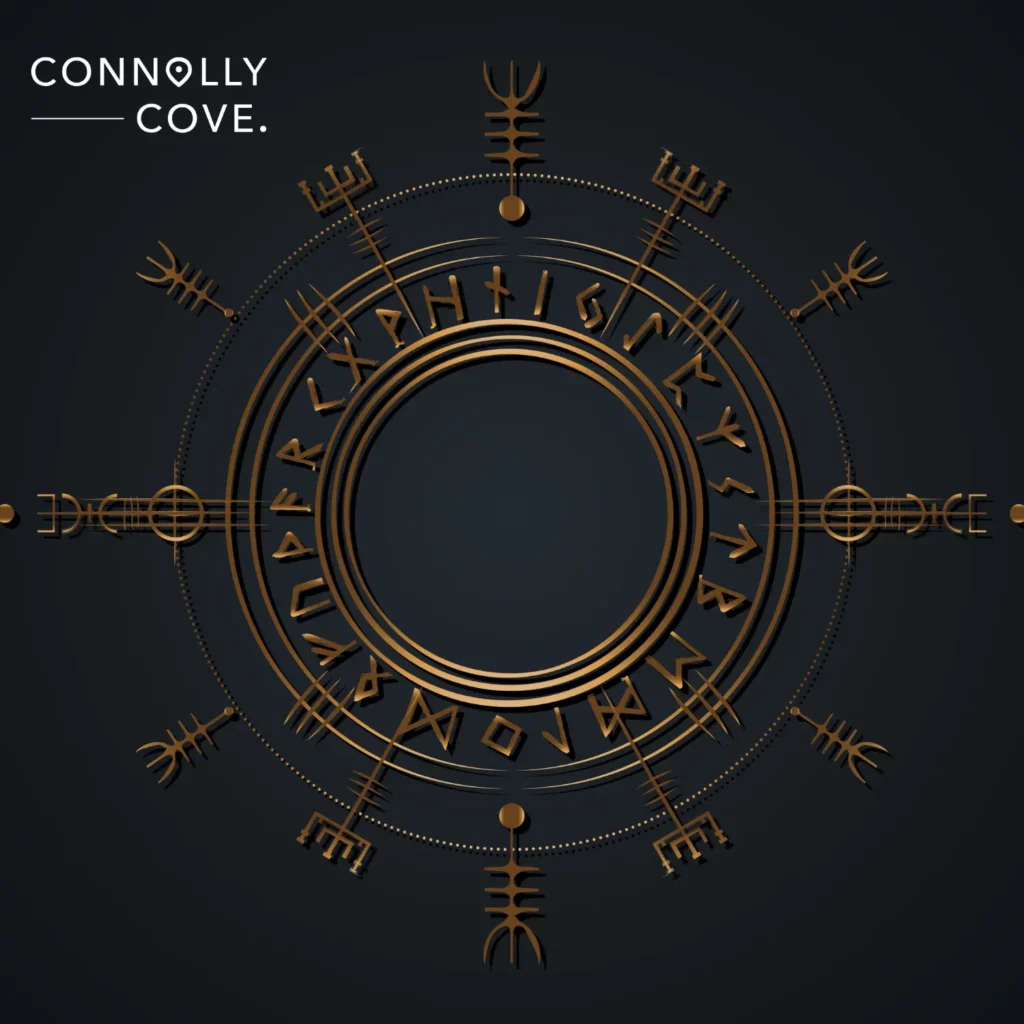
Vegvisir is a powerful Viking symbol that represents guidance and protection. It is often called the “Viking compass” or the “Wayfinder.” The Vegvisir symbol consists of eight arms radiating outward from a central point, forming a circular shape.
According to Norse mythology, this symbol was believed to guide travellers through rough weather, challenging situations, and unfamiliar territories, ensuring they would find their way home safely. It was also considered a spiritual compass, providing wisdom and clarity during difficult times. The Vegvisir has become popular among adventurers and explorers today as a symbol of finding one’s path in life and navigating through challenges with resilience.
5. Aegishjalmur
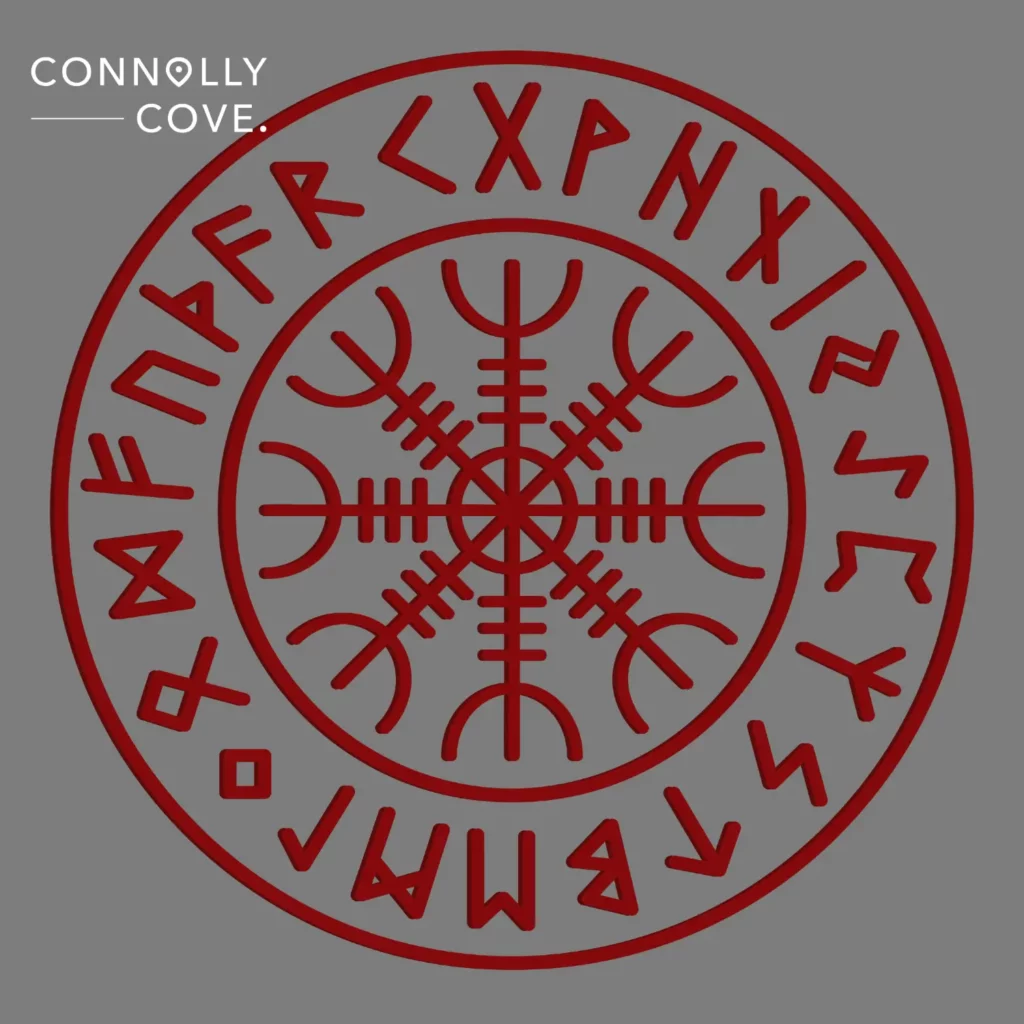
Aegishjalmur, also known as the Helm of Awe or Helm of Terror, is a powerful Viking symbol associated with protection and strength. It consists of eight intersecting arms that radiate from a central point.
In Norse mythology, wearing the Aegishjalmur was believed to grant fearlessness in battle and protect against evil forces. Warriors often used it as a talisman to instil courage and induce fear in enemies, warding them off. Today, it is popularly worn as jewellery or used for decorative purposes to signify personal power and determination.
6. Fenrir
Fenrir is a powerful and fearsome creature in Norse mythology. He is depicted as a giant wolf with an insatiable hunger. Fenrir symbolises chaos, destruction, and the uncontrollable forces of nature.
According to legend, he was destined to bring about Ragnarok, the end of the world. This Viking symbol represents danger and unpredictability. For history buffs and nature lovers, Fenrir serves as a reminder of the wildness that exists in the world and our need to respect and understand it.
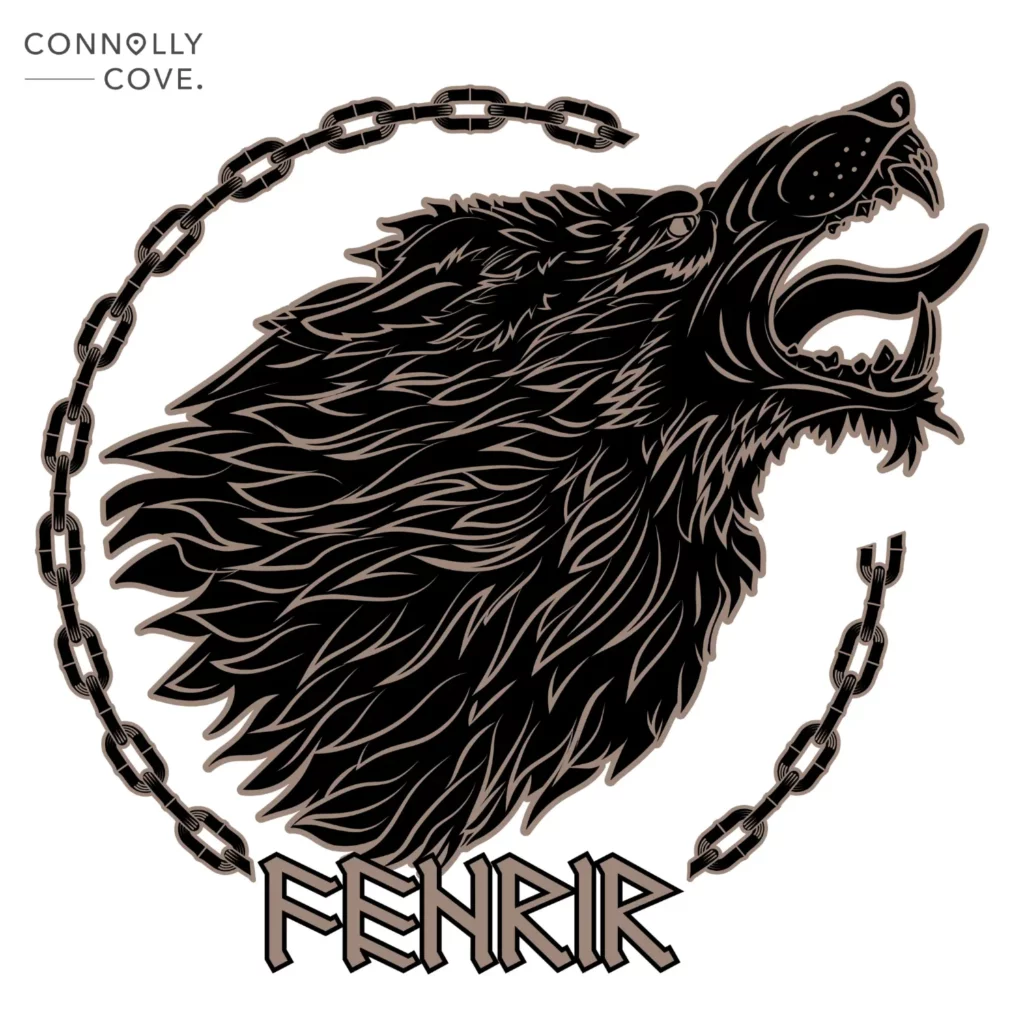
7. Gungnir
Gungnir is the magical spear of Odin, the Viking religion’s chief god. Gungnir was believed to be indestructible and always hit its intended target with precision.
This Viking symbol represents Odin’s warrior wisdom, power, and determination. Gungnir also represents divine authority and leadership in battle. Its importance can be seen in various stories where Odin uses the spear to defeat enemies or make crucial decisions.
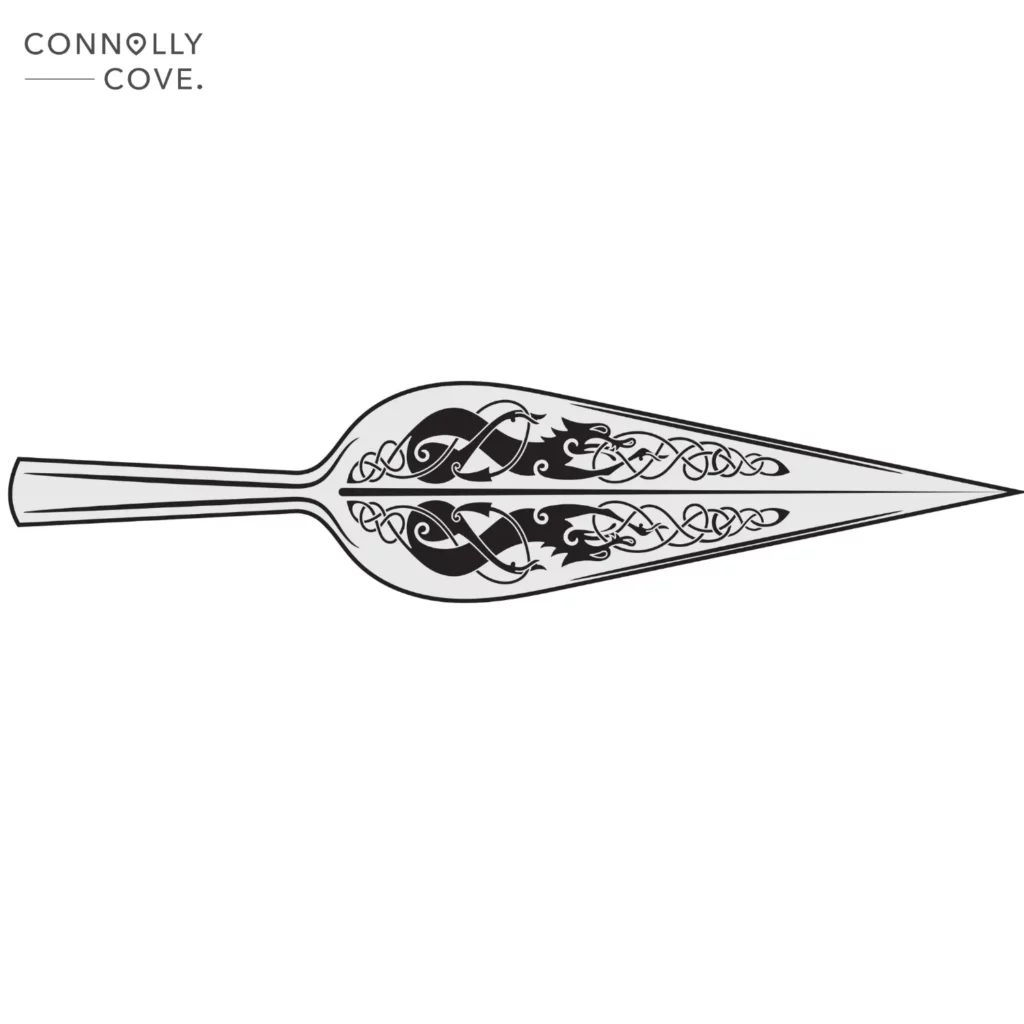
8. Sleipnir
Sleipnir is an eight-legged horse of war that belongs to the mighty god Odin. Sleipnir represents swiftness, agility, and strength. According to Norse legends, this magical horse can travel between worlds and carry its rider through any terrain or obstacle. Sleipnir is often seen as a symbol of adventure and exploration.
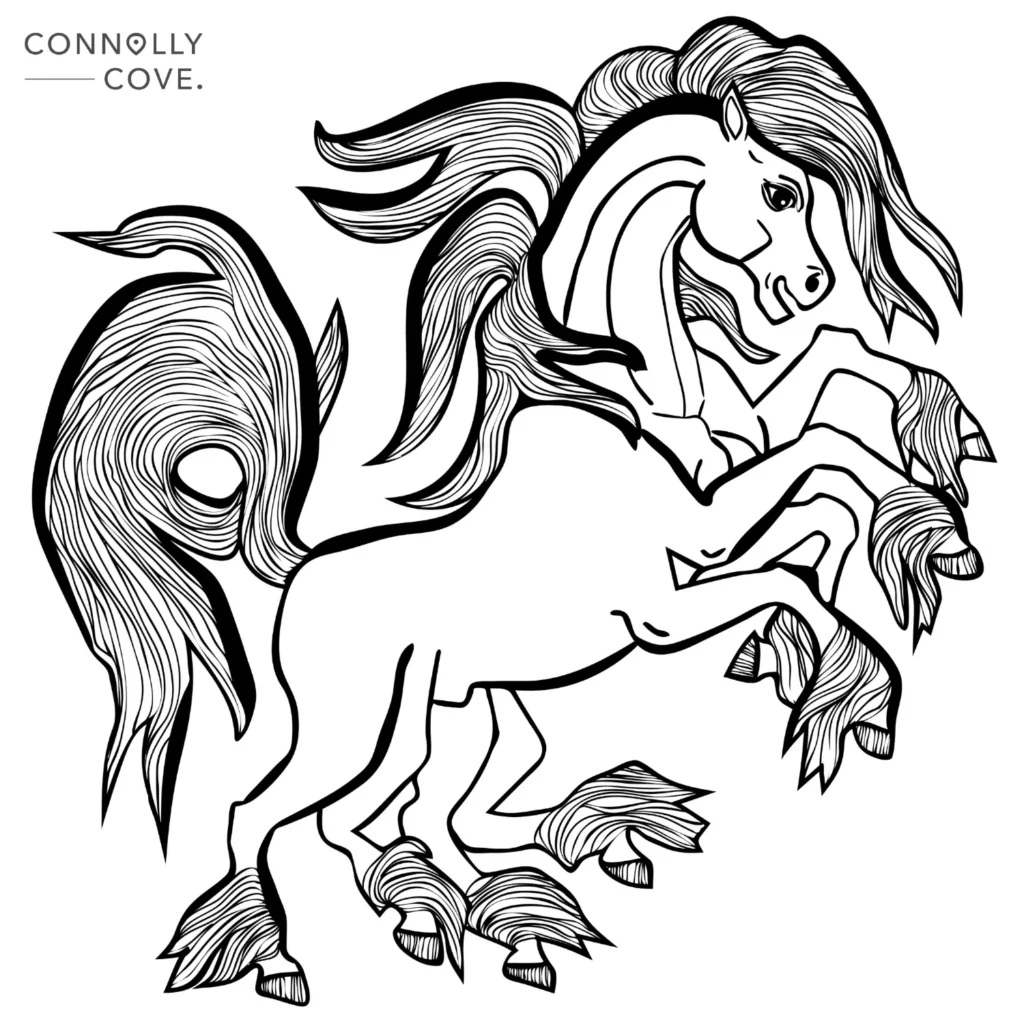
9. Ravens
Ravens were highly revered in Viking culture and held significant symbolism. These intelligent birds were associated with Odin, the chief Norse god, and were considered his messengers.
Ravens signified wisdom, knowledge, and prophecy. They were believed to accompany warriors into battle and bring them victory. In Norse mythology, Hugin (Thought) and Munin (Memory) were Odin’s ravens who flew around the world gathering information for him. Seeing a raven was seen as an omen of good fortune or a sign that Odin was watching over you.
10. Longship
The longship was a crucial symbol of Viking culture, representing the seafaring nature of the Norse people. Vikings used these impressive vessels for exploration, trade, and warfare. They symbolised the adventurous spirit that defined the ancient Viking people.
Longships were known for their sleek design, allowing them to navigate rivers and seas easily. The longships had a shallow draft, allowing them to sail in shallow waters without getting stuck. With their strong sails and oarsmen rowing in unison, these ships could achieve remarkable speeds and travel great distances.
11. Berserkers
Berserkers were fearless Viking warriors known for their wild and uncontrollable rage in battle. They would go trance-like before fighting, making them incredibly strong.
These warriors wore animal skins and fought with great ferocity, inspiring fear in their enemies. The word “berserker” comes from the Old Norse language, meaning “bear-shirt,” symbolising their connection to the bear spirit.
Berserkers were believed to possess supernatural abilities, making them almost invincible on the battlefield. Their presence evoked both admiration and terror among their fellow Vikings and foes alike.
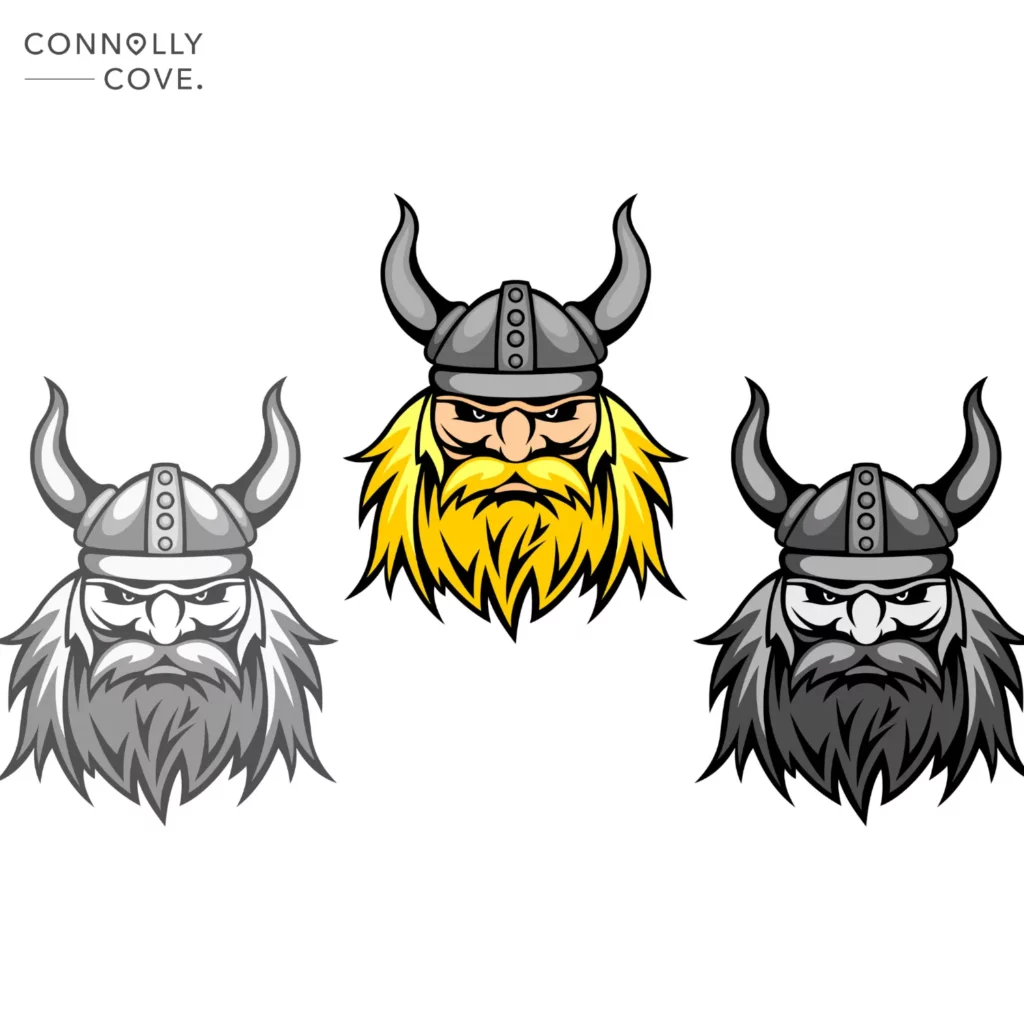
12. Dragons
Dragons are powerful and mythical creatures that hold great significance in Viking culture. In Norse mythology, dragons represent strength, danger, destruction, and wealth. They were believed to guard treasure hoards and possess incredible powers.
Dragons were also associated with wisdom and knowledge. These magnificent creatures often adorned Viking ships as figureheads, symbolising protection and good fortune during sea voyages.
13. Svefnthorn
A sleep-inducing symbol used magically to put someone to sleep.
The Svefnthorn is a lesser-known but intriguing Viking symbol associated with magical practices. Translated as the “sleep thorn” or “sleep thistle,” the Svefnthorn is believed to possess the mystical ability to induce a deep sleep or even a trance-like state.
The Norse purportedly used this symbol to influence the sleep of others. It carries an element of control over unconsciousness. The Svefnthorn reflects the mystical and sometimes mysterious aspects of Norse magic, highlighting the belief in the interconnectedness between the waking world and the ethereal planes in Viking culture.
By understanding the meanings and symbolism of Viking symbols, we gain insights into the rich culture, mythology, beliefs and values that shaped the history of Vikings.
It’s also important to note that interpretations of these symbols can vary, and some may have multiple meanings or significance depending on the context in which they are used. Additionally, many of these symbols have been popularised and adapted in modern contexts beyond their original Norse cultural and religious significance. So, next time you come across a Viking symbol, remember that it carries a story waiting to be told.






